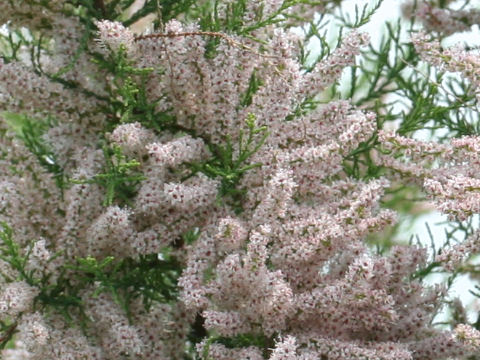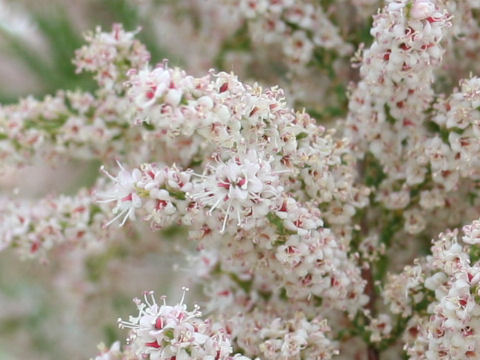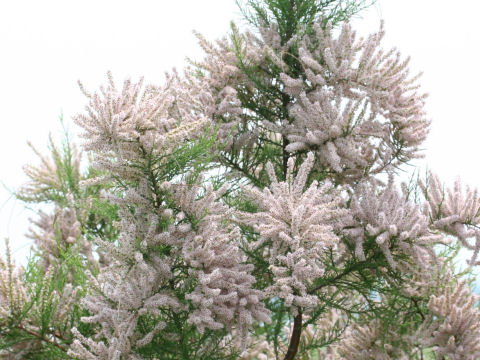 |






|

|
中国の中北部から東南部、内モンゴル自治区に分布しています。わが国へは江戸時代の中頃に渡来しました。高さは5〜8メートルになり、赤みを帯びた細い枝が長く伸びます。葉は鱗片状の線形で互生します。5月から6月と8月から9月ごろ、枝先の総状花序に小さなピンク色から白色の花を咲かせます。耐塩性が強く、庭園などに植栽されます。中国語では「檉柳(cheng liu)」と呼ばれます。かつては観賞植物として植えられていましたが、今ではアメリカ南西部の荒野への攻撃的な侵入者となっています。
|

|
ギョリュウ科ギョリュウ属の落葉小高木で、学名は Tamarix chinensis。英名は Salt cedar。
|

|
The Salt cedar (Tamarix chinensis) belongs to Tamaricaceae (the Tamarisk family). It is a semi-tall deciduous tree that is distributed from central and northern China to southeastern China and the Inner Mongolia Autonomous Region. It was introduced to Japan in the middle of the Edo period (1603-1867). It grows 5 to 8 m tall with long, thin, reddish branches. It produces small pink to white flowers in racemes at the ends of its branches from May to June and from August to September. It is salt-tolerant and can be planted in gardens. It is called "檉柳" (cheng liu) in Chinese. Once an ornamental plant, it is now an aggressive invader of the wilds of the American Southwest.
|

|
長野県安曇野市堀金倉田にて、2006年06月02日撮影。
|




